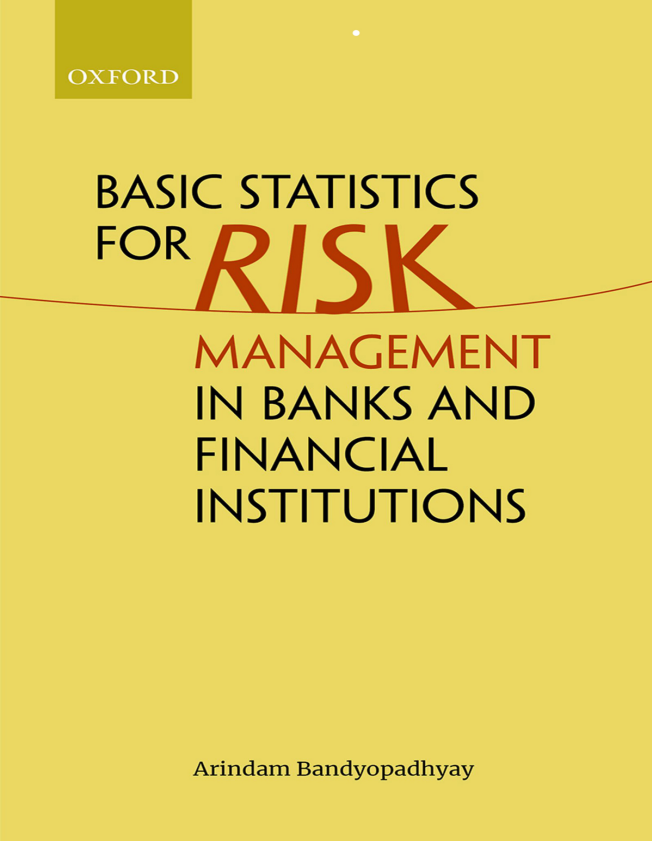Basic Statistics for Risk Management in Banks and Financial Institutions by Arindam Bandyopadhyay

1
Introduction to Risk Management
Basics of Statistics
Quantitative research is about measurements. Statistics and econometrics
are the most widely used branch of mathematics in quantitative research.
Quantitative research using statistical methods typically begins with the
collection of data based on a theory or hypothesis, followed by the
application of descriptive or inferential statistical methods.
Statistics is the methodology for collecting, analysing, interpreting data,
and drawing conclusions from information obtained by the researcher.
Since we cannot ‘get away’ from theory in scientific research, it should be
made explicit to bring transparency in research. Theory provides us with a
framework for the research. That is why we need to understand risk
management subjects as well to apply these techniques. Theoretical
formulation of research results enables generalization, benchmarking the
study, and enhances the ‘explanatory power’ and acceptability of the
results.
Econometric techniques utilize economic theory, facts (data), and
statistical techniques, to measure and test certain relationships among
meaningful (economic) variables, thereby giving these results to economic
reasoning. Empirical finance provides analytical tools needed to examine
the behaviour of financial markets, viz. estimating the dynamic impact
multiplier of financial shocks, forecasting the value of capital assets,
measuring the volatility of asset returns, testing the financial integration,
assessing the determinants of non-performing assets (NPAs) in banks, and
more.
Those who are likely to be successful researchers/analysts are more
usually attracted by the problem-solving side of the work and the practical
application of the mathematics and logic rather than the
mathematics/statistical concepts per se.
This chapter provides a broad description of types of risks faced by the
banking institutions. It introduces the reader with various types of risks and
their interrelationships. We also discuss the role of statistical methods in
measuring and monitoring the core risks faced by financial institutions
(FIs).
What is Risk?
A risk is a random event that may possibly occur and, if it did occur, would
have a negative impact on the goals of the organization. Risk refers to the
chance of financial losses due to random changes in underlying risk factors.
It is the probability of incurring loss due to unexpected and unfavourable
movement of certain parameters. Risk is composed of three important
elements: the scenario (or event identification), its probability of
occurrence, and the size of its impact (either a fixed value or a range of
values in distribution pattern). An opportunity is also a random variable
which is the other side of the coin. But it has a positive impact on the goals
of the organization. Risk managers are more concerned about the possibility
of random events that would have negative influence of profitability (e.g.
sudden increase in percentage of gross non-performing assets or rise in
interest rate volatility).
In the business world, accepting risks is necessary to obtain a competitive
advantage and generate profit. Introducing new product or expanding
production facilities involves both return and risk. Risk taking is a natural
part of banking transactions since without a willingness to take risk, there is
generally very little expected reward. Banks typically create value for
shareholders through their liabilities as well as their assets. The goal of risk
management for banks is to determine the optimal level of risk that
maximizes bank return subject to the constraints imposed by the regulators.
A well-governed bank will have process and system in place to identify this
optimal amount of risk and to make sure that its risk does not deviate too
much from this amount. Risk management makes bankruptcy less likely, by
making top management aware of the volatility of overall cash flows.
Risk implies losses. A bank needs to measure the impact of three kinds of
losses:
Basic Statistics for Risk Management in Banks and Financial Institutions by Arindam Bandyopadhyay




